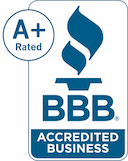Alcohol and Drug Rehab Near Birmingham, AL
Birmingham is the largest city in Alabama and the county seat in Jefferson County. Like most areas in the U.S., Birmingham has many residents struggling with drug and alcohol addiction.
If you or a loved one has lost control of their substance use, this page provides information on addiction treatment options near Birmingham, AL, what to consider when choosing a rehab, local substance abuse statistics, and more.
Types of Drug and Alcohol Rehab
Oxford Treatment Center is a top-quality drug and alcohol rehab in Etta, Mississippi, near Birmingham. At Oxford, we offer different types of addiction treatment and personalized care designed to meet the individual needs of each patient.
Our levels of care include:
- Often the first step in the recovery process.
- Ensures patient safety and comfort as the body rids itself of toxins like drugs and alcohol.
- Patients have access to around-the-clock care and medical support.
- Our highest, most intensive level of care, where patients stay on-site and have access to 24/7 medical support.
- Ideal for patients with co-occurring mental health disorders or severe addictions.
- Patients attend a structured schedule of group and individual treatment sessions focused on addressing the thoughts and behaviors that drive addiction.
- Held at our state-of-the-art Oxford Resolutions campus in Oxford, MS, outpatient offerings include partial hospitalization (PHP) and intensive outpatient (IOP) programs.
- Patients are not required to live at the facility, but we do have an adjacent sober living home for those who may need added support and find comfort in surrounding themselves with a like-minded community.
- Patients receive many of the same therapies and programs offered in inpatient or residential rehab.
- Helps patients sustain long-term recovery and avoid relapse through continued support and resources.
Choosing A Drug & Alcohol Rehab Near Birmingham, AL
Choosing a rehab in or near Birmingham, AL, can be challenging and overwhelming. Here are some factors to consider during the process:1
- Accreditation. Make sure the treatment facility is fully licensed and accredited.
- Treatments and therapies. Quality programs use a variety of evidence-based addiction treatments and therapies, meaning they are clinically proven to be effective.
- Specialized addiction programs. You may also want to look for a specialized program geared toward your personal needs, such as tracks for specific genders, religions, professions, ethnicities, and more. At Oxford, we offer addiction treatment programs designed for Veterans and first responders, drug and alcohol rehab for couples, and specialized addiction treatment for trauma survivors.
- Medication. Depending on the type and severity of your addiction, you may also want to find a rehab that provides certain medications (as needed).
- Amenities. Every facility is different in terms of the various services and recreational activities it provides. At Oxford, our unique amenities include equine therapy, scenic trails, a ropes course, fully equipped gym, private lake, and more.
- Family. Family members play an important role in the recovery process. Look for a treatment center that involves patient families and provides resources for helping a family member with addiction.
- Location. Our tranquil campus spans more than 100 forested acres in Northern Mississippi. You won’t find a more beautiful place to begin or further your recovery journey.
How to Get to Oxford Treatment Center
Removing yourself from your regular environment and potential triggers can help jumpstart the recovery process. Sometimes this means choosing a treatment center a little farther away from home.
Oxford Treatment Center is a proven addiction treatment provider in the region. Our inpatient drug and alcohol rehab in Mississippi is located in Etta, MS, about a 3-hour drive from Birmingham.
Ways to Pay for Rehab Near Birmingham, AL
At Oxford, we understand that the cost of drug and alcohol rehab is one of the most common reasons people don’t get the help they need. That’s why we strive to make addiction treatment as affordable and accessible as possible.
To learn more about using insurance to pay for rehab or other ways to pay for rehab, call us at . Our admissions navigators are available around the clock to discuss your payment options and answer any questions you may have.
You can also check your specific insurance coverage by filling out this quick and confidential .
Getting Admitted to Rehab Near Birmingham, AL
Getting admitted to our drug and alcohol rehab center in Mississippi is simple and easy. When you’re ready to get the care you deserve, contact us at .
Our admissions navigators can help you begin the process and start treatment today.
Addiction Self-Assessment Quiz
Local Drug & Alcohol Stats for Birmingham, AL
Consider the following local addiction statistics for Birmingham, AL:
- Although the state’s number of opioid prescriptions has significantly decreased over the years, its distribution rate is still nearly double the national average.2
- In 2020, Alabama dispensed prescription opioids at a rate of 80.4 prescriptions per 100 people.2
- At its peak in 2012, the state dispensed 143.8 prescriptions per 100 people, which amounts to more painkiller prescriptions than people.2
- Jefferson County, home to Birmingham, has the highest distribution in the state, with an alarming rate of 139 prescriptions per 100 people in 2020.2
- In 2020, there were 1,029 fatal overdoses in Alabama, an increase from 768 deaths the previous year. Of those fatal overdoses in 2020, 442 of them (or 43%) involved synthetic opioids like fentanyl.3,4
- Drug overdose is the number one cause of accidental deaths in Jefferson County.5
- In 2021, there were 401 fatal overdoses in Jefferson County, and 86% of those involved opioids.5
- In Jefferson County in 2021, the number of overdose deaths involving prescription opioids, fentanyl, heroin, and cocaine all increased from the previous year.5
- Additionally, methamphetamine deaths have continued to rise every year since 2015.5
- In 2021, the Jefferson County Department of Health gave out 4,880 Narcan (naloxone) kits, a significant increase from 1,085 kits the previous year.6
- These prevention efforts resulted in 59 opioid overdose reversals by the end of 2021.6



